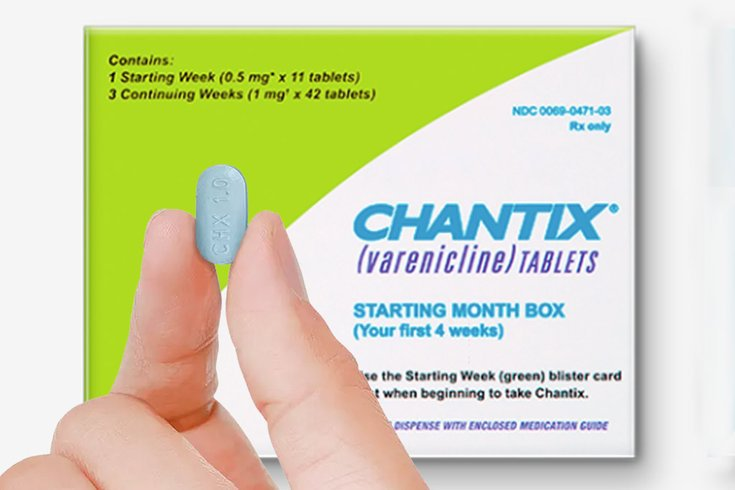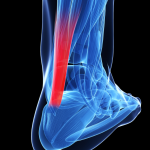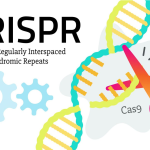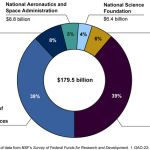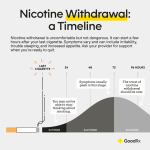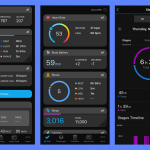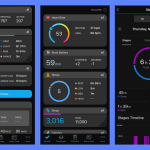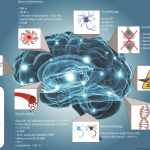Varenicline for vaping cessation emerges as a promising solution for teens and young adults struggling with nicotine addiction. A recent study published by Mass General Brigham reveals that this FDA-approved nicotine treatment has the potential to greatly enhance quitting success rates among this vulnerable demographic. Clinical trial outcomes showed that participants using the vaping cessation pill were more than three times as likely to quit compared to those receiving placebo treatment. As vaping continues to rise in popularity, particularly among adolescents—a staggering 25% of young adults vaped in 2023—finding effective smoking cessation strategies is crucial. With varenicline demonstrating a significant varenicline success rate, it stands out as an essential tool for helping young individuals successfully quit vaping.
In the realm of nicotine addiction, Varenicline serves as a crucial ally for those seeking to terminate their vaping habits. This twice-daily smoking cessation pill has garnered attention due to its FDA approval and efficacy showcased in clinical trials, particularly among younger populations. Findings indicate that adolescents and young adults benefit substantially from Varenicline, highlighting its potential as a reliable choice for effectively quitting vaping. As vaping popularity surges, understanding alternative cessation methods such as Varenicline becomes vital in combating the nicotine epidemic, especially for those in their late teens and early twenties. Thus, embracing FDA-endorsed treatments is paramount in fostering a healthier future for our younger generations.
Understanding Varenicline for Vaping Cessation
Varenicline, an FDA-approved smoking cessation pill, has emerged as a significant aid in the fight against vaping addiction, particularly among teens and young adults. Clinical studies have demonstrated that this drug can be instrumental in helping young individuals quit using nicotine vapes, being three times more effective than placebo treatments. This statistic is vital, considering the increasing prevalence of vaping among youth, which poses serious health risks due to nicotine’s addictive properties. By taking varenicline, adolescents aged 16 to 25 can access a medically supported avenue to break free from their vaping habits.
The success rate of varenicline in smoking cessation is particularly noteworthy. In recent trials conducted by Mass General Brigham, researchers discovered that over half of the participants on varenicline successfully stopped vaping within 12 weeks, a significant contrast to the much lower success rates of the placebo group. This finding signals a new frontier in vaping cessation treatments, emphasizing the need for comprehensive strategies that combine medication with behavioral counseling to optimize outcomes for this vulnerable demographic.
The Role of FDA-Approved Nicotine Treatments
FDA-approved nicotine treatments are crucial tools in the battle against vaping addiction. Medications like varenicline not only help manage withdrawal symptoms but also change the way the brain responds to nicotine. The increasing addiction to vaping among adolescents presents a dire public health concern, making it imperative that we understand the role of these treatments. Clinical evidence suggests that medications such as varenicline should be at the forefront of vaping cessation efforts for young people, offering a structured approach to quitting that goes beyond traditional behavioral support alone.
In the context of smoking cessation for young adults, nicotine treatments like varenicline have shown promise. The combination of pharmacotherapy and behavioral interventions can create a comprehensive cessation program that addresses the specific needs of this age group. By continuing to explore the effectiveness of such FDA-approved treatments, researchers aim to develop more tailored approaches that could improve quitting rates and ultimately reduce the incidence of vaping among youth.
Challenges of Quitting Vaping for Teens and Young Adults
The road to quitting vaping for teens and young adults is fraught with challenges, particularly when it comes to the physical addiction to nicotine. Vaping has become a normalized behavior in many social circles, making it more difficult for young individuals to seek help or even consider quitting. Moreover, many young users may not recognize the seriousness of their addiction or the potential long-term health risks associated with nicotine exposure. Understanding these challenges is crucial in tailoring effective cessation strategies that resonate with young audiences.
Furthermore, the stigma surrounding vaping can discourage young people from seeking assistance. Many might feel ashamed of their addiction and may not view vaping as a serious issue compared to traditional smoking. This perception can be addressed through education and outreach, emphasizing that vaping is not a benign activity and stressing the availability of resources such as varenicline for those who wish to quit. Creating environments that support open conversations about vaping and the available treatments can significantly impact teens’ willingness to pursue quitting.
Behavioral Counseling and Its Importance in Vaping Cessation
Behavioral counseling plays a pivotal role in vaping cessation, especially when used in conjunction with medications like varenicline. Counseling provides the necessary emotional and psychological support that helps individuals understand their addiction and develop coping strategies. This aspect of treatment becomes crucial for young adults who may face unique stressors that contribute to their vaping habits. Through counseling, participants can explore the underlying reasons for their nicotine use and gain skills to navigate triggers and cravings.
Additionally, integrating behavioral counseling with pharmacotherapy has been shown to enhance the overall success rates of cessation programs. In the study conducted at Mass General Brigham, participants who utilized varenicline along with weekly behavioral counseling achieved significantly higher quitting rates compared to their peers relying solely on behavioral support. This demonstrates that a comprehensive approach that combines medication with consistent counseling is essential for effectively addressing vaping cessation in young populations.
The Impact of Vaping on Adolescent Health
The impact of vaping on adolescent health is a growing concern among healthcare professionals and researchers alike. Vaping exposes young people to nicotine, which can lead to long-term addiction and various health problems, including respiratory issues and neurological alterations. Since the adolescent brain is still developing, nicotine exposure can interfere with cognitive functions and increase the likelihood of substance abuse in the future. Understanding these health ramifications is critical for motivating teens and young adults to quit vaping.
Moreover, vaping is often incorrectly perceived as a safer alternative to smoking, leading to increased usage among youth. Educating this demographic about the actual risks associated with vaping can help combat misinformation and encourage healthier choices. Successful cessation programs, particularly those utilizing varenicline, can significantly mitigate these risks, demonstrating a commitment to protecting adolescent health and guiding them towards a healthier future free from nicotine addiction.
Evaluating the Success Rate of Varenicline
The success rate of varenicline as a cessation aid is compelling, especially when considering its application in vaping cessation. With a reported success rate over three times that of placebo, varenicline has proven itself as a powerful ally in the effort to help young people quit nicotine. Longitudinal studies suggest that individuals who utilize this FDA-approved treatment are likely to maintain their abstinence from vaping long-term compared to those who rely solely on behavioral methods.
Such promising outcomes reflect the importance of empirical research in validating the effectiveness of treatments for vaping cessation. Understanding the varenicline success rate helps inform clinicians and caregivers about the best practices in treating nicotine addiction among young adults. Continued research into this area will further bolster its potential as a cornerstone therapy for addressing the vaping epidemic that disproportionately affects teens and young adults.
Exploring Alternative Treatments for Vaping Cessation
While varenicline has shown substantial success rates, exploring alternative treatments for vaping cessation remains an essential aspect of developing comprehensive strategies. Different approaches such as nicotine replacement therapies, counseling techniques, and non-nicotine medications can provide options tailored to individual preferences and needs. As vaping technology evolves and new products enter the market, understanding a wider range of treatment options ensures that effective solutions are available for all demographics.
Moreover, combining various treatments has the potential to maximize the chances of quitting. For instance, integrating behavioral therapy with support systems like the ‘This is Quitting’ text service can enhance motivation and accountability. By understanding the landscape of available cessation methods, healthcare providers can create personalized plans that empower young individuals to overcome their vaping addiction successfully.
Preventing Vaping Initiation Among Adolescents
Preventing vaping initiation among adolescents is a critical component of public health strategies aimed at combating nicotine addiction. Education is paramount in raising awareness about the risks associated with vaping and debunking myths surrounding its perception as a ‘safer’ alternative. Strategies to engage and inform young people, such as peer-led discussions, school programs, and community outreach, can effectively reduce the rate of vaping initiation.
In addition to education, creating supportive environments that encourage healthy decision-making is also vital. Parents, schools, and community organizations play a significant role in shaping attitudes towards vaping and can foster dialogues that challenge the normalization of nicotine use. By focusing on prevention efforts alongside treatments like varenicline, we can work towards a future where adolescent vaping rates decline, ultimately leading to healthier outcomes for younger generations.
The Future of Vaping Cessation Strategies
The future of vaping cessation strategies will likely be shaped by ongoing research and developments in understanding nicotine addiction. As new data emerges, treatment protocols may evolve to integrate more effective methods, including personalized medicine approaches that account for genetic and behavioral factors influencing addiction. This evolution will be crucial in addressing the unique needs of teens and young adults, ensuring that cessation interventions remain relevant and effective.
Moreover, as society becomes more aware of the vaping epidemic and its implications, advocacy for policy changes and increased access to cessation resources is expected to gain momentum. Supporting further research into treatments like varenicline and exploring additional avenues will create a comprehensive framework for combatting nicotine addiction. By fostering a collective understanding of the importance of vaping cessation, we can contribute to creating a healthier future for young individuals worldwide.
Frequently Asked Questions
How effective is varenicline for vaping cessation among teens?
Varenicline has been shown to be highly effective for vaping cessation among teens and young adults. Clinical trials indicate that individuals aged 16 to 25 who used varenicline were over three times more likely to successfully quit vaping than those who only received behavioral counseling. At 12 weeks, 51% of varenicline users had stopped vaping compared to just 14% of those on a placebo.
Is varenicline an FDA-approved treatment for vaping cessation?
Yes, varenicline is an FDA-approved smoking cessation pill that is effective for adults and can also be prescribed for teens and young adults aged 16 to 25 who want to quit vaping. This medication helps in breaking the nicotine addiction commonly associated with vaping.
What are the benefits of using varenicline for quitting vaping in young adults?
The benefits of using varenicline for quitting vaping include significantly higher success rates compared to placebo treatments. Research indicates that it effectively helps young adults overcome nicotine addiction while maintaining safety, with no observed increase in the smoking of traditional cigarettes among users.
Can teens use varenicline for vaping cessation?
Yes, teens aged 16 to 25 can use varenicline for vaping cessation. Recent studies have demonstrated that this FDA-approved smoking cessation pill aids in quitting nicotine vaping, providing a much-needed solution for the rising vaping epidemic among young people.
What is the success rate of varenicline for vaping cessation compared to behavioral counseling?
The success rate of varenicline for vaping cessation is significantly higher than that of behavioral counseling alone. In clinical trials, 51% of participants using varenicline successfully quit vaping after 12 weeks, compared to only 14% of those receiving placebo treatment with behavioral counseling.
What does the research say about varenicline’s safety for young adults trying to quit vaping?
Research indicates that varenicline is safe for young adults attempting to quit vaping. In clinical studies, no participants who quit vaping turned to traditional cigarettes, underscoring the medication’s effectiveness and safety profile for addressing nicotine addiction in this age group.
How does varenicline compare to other smoking cessation methods for young adults?
Varenicline offers a unique advantage over other smoking cessation methods for young adults, especially for those looking to quit vaping. It has demonstrated superior success rates in clinical trials, highlighting its effectiveness in assisting young people to break free from nicotine dependence.
What alternative treatments exist for teens trying to quit vaping?
While varenicline is a leading treatment option, behavioral counseling and support programs, like the ‘This is Quitting’ text service, also play a vital role in supporting teens in their vaping cessation journey. However, varenicline has shown significantly better outcomes in clinical studies.
| Key Points |
|---|
| Varenicline is an FDA-approved smoking cessation medication that can also help teens and young adults quit vaping. |
| A study showed that teens and young adults using varenicline were over three times more successful at quitting vaping compared to those receiving a placebo. |
| 261 participants aged 16 to 25 were involved in the clinical trial, with various treatment groups including varenicline and behavioral counseling. |
| After 12 weeks, 51% of varenicline users had successfully quit vaping, compared to only 14% of placebo users and 6% of text service users. |
| The study indicates that varenicline is both effective and safe, showing no shift of participants from vaping to smoking cigarettes. |
| The findings emphasize the necessity for effective treatments for vaping cessation among adolescents, and the ongoing need for research into further therapeutic measures. |
Summary
Varenicline for vaping cessation has emerged as a vital tool in helping young individuals combat their vaping habits. The latest research indicates that this FDA-approved medication is significantly more effective than placebo treatments. With clinical evidence showing over three times the success in quitting rates among users, varenicline represents a promising avenue for adolescents and young adults seeking to break free from nicotine addiction. This research underscores the importance of providing effective medical interventions aimed at reducing the prevalence of vaping among youth, ensuring healthier futures.
